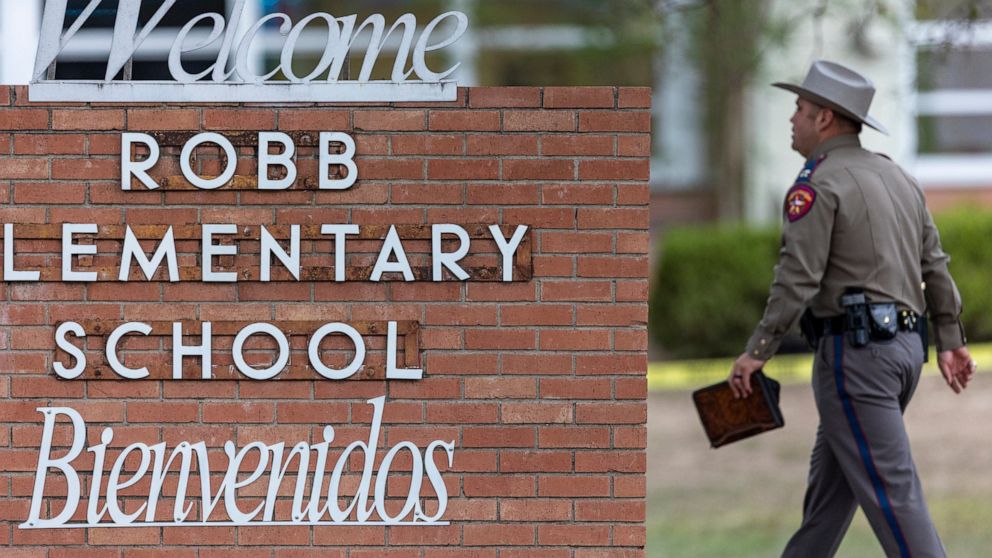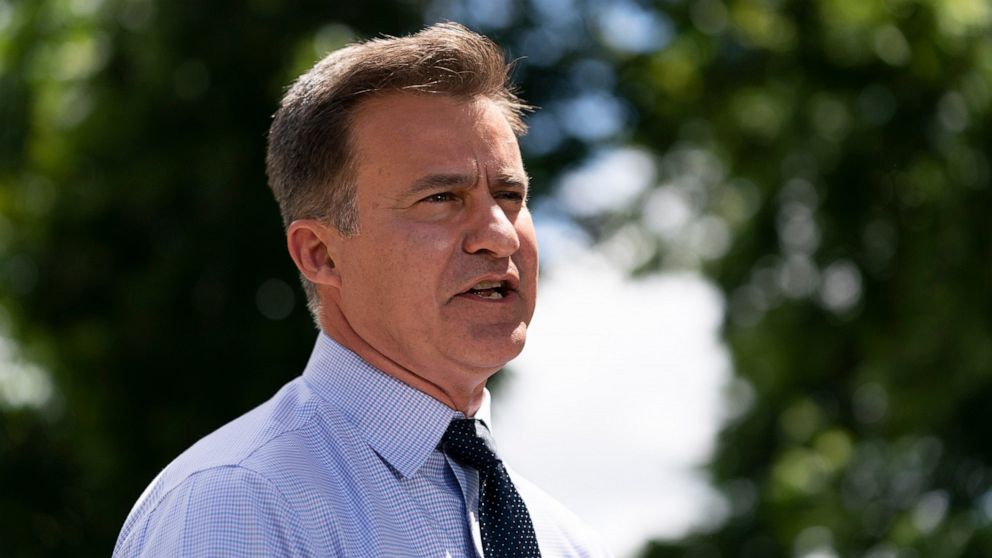What did police know as the Uvalde school shooting unfolded?
As investigators dig deeper into the law enforcement response to the deadly school shooting, in Uvalde, Texas, a host of disturbing questions remain about what officers on the scene knew as the attack was unfolding

As investigators dig deeper into the law enforcement response to the school shooting in Uvalde, Texas, a host of disturbing questions remain about what officers on the scene knew as the deadly attack was unfolding.
Did any of them know children were trapped in a classroom with the gunman? Was that potentially critical information relayed to the incident commander on the scene? And did officers challenge the commander's decision not to promptly storm the classroom?
Authorities have not released audio of the 911 calls or radio communications but have confirmed dispatchers received panicked 911 calls from students trapped in the locked classroom with the gunman while officers waited in a hallway outside.
In an apparent breakdown in communications, the commander overseeing police at the scene, school district Police Chief Pete Arredondo, was never informed that children were calling 911 from inside the school, Texas state Sen. Roland Gutierrez said Thursday.
Gutierrez told The Associated Press on Friday that the state agency investigating the shooting determined Arredondo was not carrying a police radio as the massacre unfolded.
Arredondo also has come under criticism for not ordering officers to immediately breach the classroom and take down the gunman. Steven McCraw, the head of the Texas Department of Public Safety, said that Arredondo believed the active shooting had turned into a hostage situation, and that the chief made the “wrong decision.”
Nineteen children and two teachers were killed in the attack last week at Robb Elementary, the deadliest school shooting in nearly a decade. Seventeen others were injured. The funerals began this week.
Arredondo has not responded to repeated interview requests from The AP, and telephone messages left at the school police headquarters were not returned.
There have been other cases in which officers on the scene of a crime were not relayed critical information by a police dispatcher, often because the dispatcher wasn't following protocols, said Dave Warner, a retired police officer and expert at the International Academies of Emergency Dispatch.
He cited a 2009 domestic disturbance call in Pittsburgh in which a woman told a 911 operator that her son was armed. That information was never relayed to responding officers. When they arrived, the man opened fire, ultimately killing three officers and seriously wounding two.
“It’s an old case, but it’s still very relevant today," Warner said.
Protocols for 911 dispatchers handling calls in active-shooter situations also specifically caution against changing a law enforcement response based solely on the amount of time that has elapsed since shots were last heard, Warner said.
Warner said those protocols were developed in part as a result of the 2007 mass shooting at Virginia Tech, where a student killed 32 people.
In that case, the gunman first killed two people at a dormitory. Police and school authorities thought that the gunman had fled the campus and that the danger had passed. But he instead moved on to another part of campus a couple of hours later and continued his murderous rampage.
Warner said the protocols stress that dispatchers should not think a shooting is over "just because that caller can no longer see the shooter or hear shots being fired."
The protocols also outline key questions for 911 dispatchers to ask callers in active-shooter cases, including the types of weapons involved, the number and location of suspects and whether the caller can safely evacuate the building.
The gunman in Uvalde, 18-year-old Salvador Ramos, spent roughly 80 minutes inside the school before law enforcement officers killed him, according to an official timeline.
Since the shooting, law enforcement and state officials have struggled to present an accurate account of how police responded, sometimes providing conflicting information or withdrawing some statements hours later.
Many of those details are likely to become clearer after reviewing 911 calls and police radio communications, said Fritz Reber, a 27-year veteran and former captain with the Chula Vista, California, Police Department who has studied 911 dispatch systems.
Operators at a 911 center typically relay information from callers in writing to a dispatcher, who then passes it along to officers in the field over the radio.
On the scene of major events, a specific radio channel is typically established so that all local, state and federal agencies can communicate with one another, Reber said. It is not clear whether that was done in Uvalde.
Reber said one reason information may not be relayed by dispatchers to officers on the ground is that dispatchers don't want to overload the channel with details they assume police on the scene would already know.
“The assumption is the officers are there and will know more about what's going on than the people calling 911," he said.
Thor Eells, former commander of a 16-member SWAT team in Colorado Springs, Colorado, and director of the National Tactical Officers Association, said another key question is how many people were working at the 911 call center covering Uvalde.
“A lot of 911 calls were being placed, and in my experience that can lead to information overload," he said. “When the 911 call center is being overwhelmed, it is extremely difficult to make sure you have a timely flow of information."
There have been communication breakdowns during other mass shootings in Texas, and experts say smaller, regional dispatch centers are often inundated with calls during a major emergency.
Police communications were a problem in 2019 when a gunman shot and killed seven people and wounded more than two dozen during a rampage in Odessa, Texas.
Authorities said 36-year-old gunman Seth Aaron Ator called 911 before and after the shootings, but a failure in communication between agencies — they were not all operating on the same radio channel — slowed the response. Ator was able to cover about 10 miles before officers shot and killed him.
———
More on the school shooting in Uvalde, Texas: https://apnews.com/hub/uvalde-school-shooting
———
Associated Press writer Jake Bleiberg contributed to this report from Dallas.






















